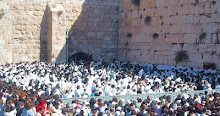Debris May Not Be From Air France Jet
PARIS — The French government expressed deep disappointment Friday over the news that ocean debris recovered by the Brazilian military this week appeared to be the remains of a shipwreck and not from an Air France jet that crashed in the South Atlantic on Monday.
In a radio interview, the transportation minister, Dominique Bussereau, urged "extreme prudence" about judging the source of any debris that is recovered until it could be properly analyzed. "The main objective is to get our hands on the black boxes, the flight data recorders," Mr. Bussereau said.
The search for clues into the crash of Air France flight 447 was thrown into confusion Thursday, after the Brazilian military said initially that it had recovered the first piece of floating debris from the plane, a structural support piece about eight feet long that might have come from the jet's cargo hold. But by Thursday evening, the military said that information had been incorrect, and that the debris had probably come from a ship or another source.
Based on the initial reports from the military, experts postulated that the plane had broken up in flight, an idea for which there is now less evidence.
The revelation came as Airbus, the manufacturer of the missing jet, issued a warning on Thursday to all its customers to follow established procedures when pilots suspect airspeed indicators are not functioning properly. The bulletin appeared to be the first hint that malfunctioning instruments indicators might have played an important role in the crash.
The message, approved by French investigators, said that the message had been sent "without prejudging the final outcome of the investigation," but clearly it pointed to the possibility that mismanaging the plane's speed could have been one step in a cascade of on-board failures, leading to the crash northeast of Brazil on Monday and the death of all 228 people on board.
The message noted that "there was inconsistency between the different measured airspeeds" in the Airbus 330 that crashed, one of several error messages that were sent by the plane's automatic systems to an Air France maintenance base.
Airspeed on jets is measured by the combination of a tube that faces forward, called a Pitot tube, and an opening on the side of the plane known as a static port. The plane's speed is determined by comparing the pressure in the Pitot tube that is created by the oncoming wind with the pressure from the static port.
The model that crashed, an A330, has three pairs of tubes and static ports. But other instruments can also be involved in calculating air speed, and the notice to airlines, called an Accident Information Telex, did not specify the nature of the inconsistency.
The message went to airlines that operate all Airbus models, from narrow-body A318 models to the double-decker jumbo A380.
Failure to manage an inconsistency properly has been cited in several crashes of big jets from various manufacturers. In 1996, a Boeing 757 taking off from the Dominican Republic crashed because the airspeed indicators of the captain and the first officer disagreed, and the crew mismanaged the problem. Mud wasps had nested in one of the Pitot tubes.
A plane that flies too slow can lose lift and crash; too fast and it can break up in the air.
The Airbus notice referred to the Quick Reference Handbook and the Flight Crew Operating Manual, which is a more detailed volume that is also kept in the cockpit. For all the models, however, the advice is the same: keep the plane level and keep the throttle setting in place while troubleshooting. The ability to fix the problem in flight would depend, of course, on its source.
With only limited information available, and without the flight data recorder or cockpit voice recorder, experts around the world could not do much more than speculate. A series of system failures could be set off by an on-board fire, by a failure that allowed ice buildup on a critical instrument, or by a variety of other causes, experts said.
The Airbus notice pointed out that the airplane was crossing an area of multiple thunderstorms at the time of the accident early Monday. Severe thunderstorms can cause crashes, although it is not clear whether the conditions that the flight encountered, on its planned route from Rio de Janeiro to Paris, were unusual.
At AccuWeather.com, a commercial weather service, forecasters calculated that thunderstorms in the region of the crash could have generated updrafts in the range of 100 miles per hour, although Daniel G. Kottlowski, a senior meteorologist, conceded that this was not unusual weather.
He noted that one message sent out automatically by the plane indicated the cabin had depressurized, and he suggested perhaps this had forced the crew to descend into breathable air — and a more intense part of the storm.









No comments:
Post a Comment